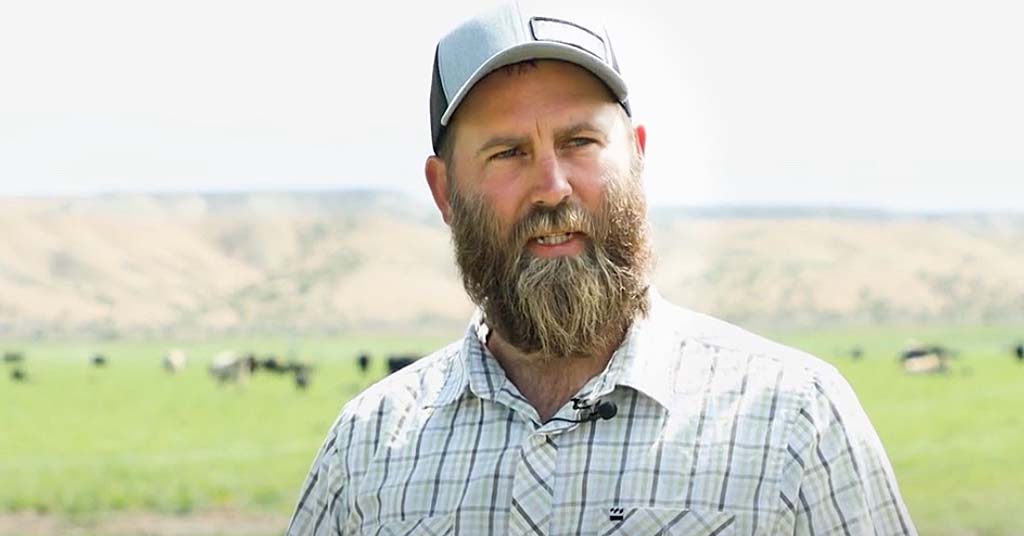A conservation group says more than half of federal grazing permit renewals were OK’d without legally required environmental analysis

The health of open grazing territory, like this rangeland on the east side of Steens Mountain in Oregon, is under scrutiny. Photo: Greg Shine/BLM
By Jordan Rane, March 31, 2022. The Bureau of Land Management administers nearly 250 million acres, or about a tenth of America’s total land mass. Its efforts to oversee land use for industry, recreation and conservation interests inevitably make it a target for criticism.
The latest beef against the BLM concerns its stewardship—or lack thereof—of 160 million acres of public land in the West allotted for livestock grazing.
As reported by E&E News in late March, a conservation group claims the government agency is “failing to conduct an environmental analysis before renewing many livestock and sheep grazing permits across millions of acres of public lands in the West.”
“There’s clear evidence that the lands under the Bureau of Land Management’s protection are unhealthy due to grazing,” Josh Osher, public policy director of Western Watersheds Project (WWP), told E&E News. “Essentially the BLM has been failing to manage public lands—and has largely failed to comply with the law.”
MORE: Invasive plant species are decimating Oregon’s rangeland
Under the National Environmental Policy Act (NEPA), the BLM is required to conduct a thorough environmental analysis of all public land allocated for livestock grazing before renewing any permit for that purpose.
According to WWP, well over half of the agency’s 10-year grazing permit renewals were granted without any NEPA-based review or land health evaluation.
A giant backlog of renewal cases is at the root of the problem, says the environmental advocacy group, and so is a culture of apathy.
“The bureau’s land managers are just willfully disregarding the law and simply not doing what’s necessary,” Osher told reporters via Zoom.
Cattlemen support BLM position
A 2014 amendment to the Federal Land Policy and Management Act enables the BLM to auto-renew 10-year grazing permits pending completion of reviews to avoid delay.
Conservation groups say the agency has used this time-buying allowance as a loophole to simply shelve reviews indefinitely—while unchecked over-grazing degrades federal lands, wilderness areas and critical habitats of threatened species, such as the greater sage grouse.

Ranchers take part in a rangeland photo monitoring workshop. Photo: University of Idaho
Other groups disagree with this assessment.
True, backlogs “continue to plague many agencies,” Kaitlynn Glover, executive director of natural resources for the National Cattlemen’s Beef Association and executive director of the Public Lands Council told E&E in an emailed response. “But to say that range conditions aren’t being monitored is blatantly false. Ranchers and grazing permittees engage in regular range monitoring that informs their grazing decisions, and because their ecological data is accurate and timely, they are able to make responsible management decisions in real time.”
That view has been challenged by a recent analysis of BLM data by government watchdog group Public Employees for Environmental Responsibility (PEER).
The group found that 54 million acres of the bureau’s public rangeland don’t meet minimum health standards.
Livestock ranching groups have disputed PEER’s findings as a “wholly unscientific” study based on a “cherry-picked hit map.”
Conservation groups, in turn, point to another federal records study: in 2013, 28% of grazing permits were renewed by the BLM without NEPA reviews. Less than a decade later, that percentage has nearly doubled.
“The bureau has sharply reduced the number of new NEPA analysis for grazing allotments, and is still woefully behind on land health evaluations, as well,” Osher said. “It’s unacceptable and needs to be dealt with as soon as possible.”
As for NEPA analysis and ways grazing-permit renewals in the Columbia River Basin have been handled in recent years, it’s difficult to say.
“Hello and thank you for the opportunity to respond, we have nothing to add at this time,” replied a BLM spokesperson via email to a request for comment from Columbia Insight.
Columbia Insight contributing editor Jordan Rane is an award-winning journalist whose work has appeared in CNN.com, Outside, Men’s Journal and the Los Angeles Times.










